Chad, officially the Republic of Chad, is a landlocked country in Central Africa. It borders Libya to the north, Sudan to the east, the Central African Republic to the south, Cameroon and Nigeria to the southwest, and Niger to the west. Due to its distance from the sea and its largely desert climate, the country is sometimes referred to as the "Dead Heart of Africa".
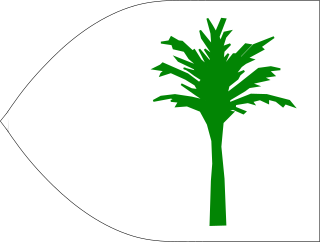
The Kanem–Bornu Empire existed in areas which are now part of Nigeria, Niger, Cameroon, Libya and Chad. It was known to the Arabian geographers as the Kanem Empire from the 8th century AD onward and lasted as the independent kingdom of Bornu until 1900.
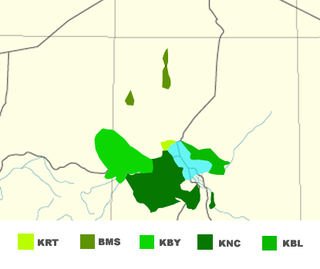
Kanuri is a Saharan dialect continuum of the Nilo–Saharan language family spoken by the Kanuri and Kanembu peoples in Nigeria, Niger, Chad and Cameroon, as well as by a diaspora community residing in Sudan.
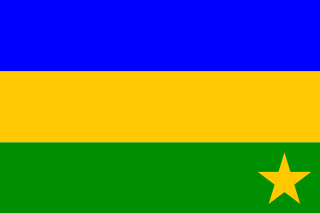
The Kanuri people are an African ethnic group living largely in the lands of the former Kanem and Bornu Empires in Niger, Nigeria, Chad, and Cameroon. As well as a diaspora community residing in Sudan. Those generally termed Kanuri include several subgroups and dialect groups, some of whom identify as distinct from the Kanuri. Most trace their origins to ruling lineages of the medieval Kanem-Bornu Empire, and its client states or provinces. In contrast to the neighboring Toubou or Zaghawa pastoralists, Kanuri groups have traditionally been sedentary, engaging in farming, fishing the Chad Basin, trade, and salt processing.
Ngazargamu, Birni Ngazargamu, Birnin Gazargamu, Gazargamo or N'gazargamu, was the capital of the Bornu Empire from ca. 1460 to 1809. Situated 150 km (93 mi) west of Lake Chad in the Yobe State of modern Nigeria, the remains of the former capital city are still visible. The surrounding wall is 6.6 km (4.1 mi) long and in parts it is still up to 5 m (16 ft) high.
The Zaghawa people, also called Beri or Zakhawa, are an ethnic group primarily residing in southwestern Libya, northeastern Chad, and western Sudan, including Darfur.

Murzuk, Murzuq, Murzug or Merzug is an oasis town and the capital of the Murzuq District in the Fezzan region of southwest Libya. It lies on the northern edge of the Murzuq Desert, an extremely arid region of ergs or great sand dunes which is part of the greater Sahara Desert.
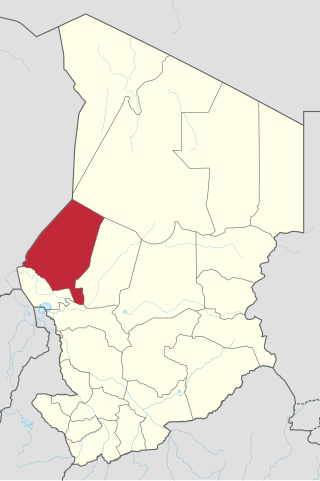
Kanem is one of the 23 regions of Chad. It is named after the famous Kanem Empire, which was centred in this vicinity. The region's capital is Mao. It was created in 2002 from the former Prefecture of Kanem. In 2008, a portion of the Kanem region was split off to become the new Bahr el Gazel Region.

Sayfawa dynasty, Sefouwa, Sefawa, or Sefuwa dynasty is the name of the Muslim kings of the Kanem–Bornu Empire, centered first in Kanem in western Chad, and then, after 1380, in Borno.
Dunama Dabbalemi, or Dounama Dibbalém, of the Sayfawa dynasty, was the mai (king) of the Kanem Empire, in present-day Chad, from 1210 to 1224.
Hummay was the first Muslim mai (king) and founder of the Sayfawa dynasty. He ruled the Kanem-Bornu Empire from either 1085 to 1097 or 1075 to 1086, after 'Abd ul Jalil of the Duguwa dynasty was overthrown.

The Bilala or Bulala are a Muslim people that live around Lake Fitri, in the Batha Prefecture, in central Chad. The last Chadian census in 1993 stated that they numbered 136,629 people. Their language, Naba, is divided in four dialects and is a part of the Central Sudanic language family; it is shared by two of their neighbours, the Kuka and the Medogo. These three peoples are collectively known as Lisi and are believed to be descendants of main ethnic groups of the Sultanate of Yao.
al-Haj Idris Alooma was Mai (ruler) of the Bornu empire, covering parts of Chad, Cameroon, Niger and Nigeria. His achievements are primarily chronicled by Ahmad bin Fartuwa, his chief Imam. His reign marked the end of the Kanem civil wars within the state, reuniting N'jimi, the former capital, under Sayfawa control. Furthermore, he introduced significant legal reforms based on Islamic law, establishing qadi courts that operated independently from the executive branch. He is credited with leading the empire to what is often regarded as its zenith during the late 16th-century and early 17th-century.
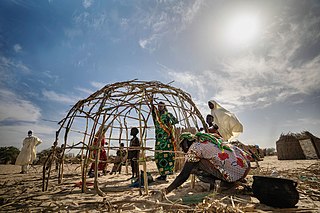
Lac is one of the 23 regions of Chad. Its capital is Bol. It is chiefly composed of the former Lac Prefecture. The region includes Chad's portion of the shore of Lake Chad.

Jukun are an ethno-linguistic group or ethnic nation in West Africa. The Jukun are traditionally located in Taraba, Benue, Nasarawa, Plateau, Adamawa, Bauchi and Gombe States in Nigeria and parts of northwestern Cameroon. They are descendants of the people of Kwararafa. Most of the tribes in the north central of Nigeria trace their origin to the Jukun people and are related in one way or the other to the Jukuns. Until the coming of both Christianity and Islam, the Jukun people were followers of their own traditional religions. Most of the tribes, Alago, Agatu, Rendere, Goemai in Shendam, and others left Kwararafa when it disintegrated as a result of a power tussle. The Jukuns are divided into two major groups; the Jukun Wanu and Jukun Wapa. The Jukun Wanu are fishermen residing along the banks of the river Benue and Niger where they run through Taraba State, Benue State and Nasarawa State. The Wukari Federation, headed by the Aku Uka of Wukari, is now the main centre of the Jukun people.
The Girgam is the royal chronicle of the Kanem–Bornu Empire, written in Arabic. Girgam is also used as the name for written historical records in some kingdoms west of Bornu, including Daura, Fika and Mandara, defined as "chronicle or 'list of ancestors'" or simply "date".
Omar Ibn Idris, or Umar Idrismi, Idris Dunama III, was the ruler of the Kanem Empire from 1372 to 1380. He moved the capital from Njimi, Kanem to Kaga, located on the western edge of Lake Chad in present day Borno State, Nigeria.
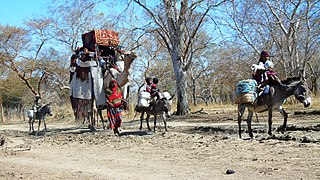
The population of Chad has numerous ethnic groups. SIL Ethnologue reports more than 130 distinct languages spoken in Chad.

Shehu al-Hajj Muhammad al-Amîn ibn Muhammad al-Kânemî (1776–1837) was an Islamic scholar, teacher, religious and political leader who advised and eventually supplanted the Sayfawa dynasty of the Kanem-Bornu Empire. In 1846, Al-Kanemi's son Umar I ibn Muhammad al-Amin became the sole ruler of Borno, an event which marked the end of the Sayfawa dynasty's eight hundred year rule. The current Shehu of Bornu, a traditional ruler whose seat remains in modern Borno State, Nigeria, is descended from Al-Kanemi.












